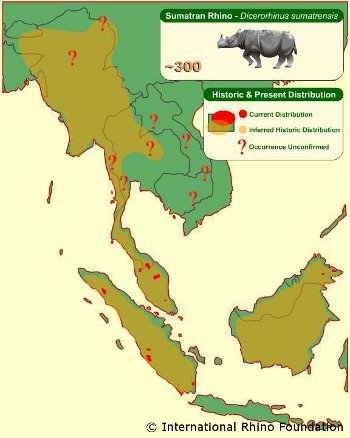
Sumatran rhinos (Dicerorhinus sumatrensis) are critically endangered. It is estimated that there are only around 200 individuals in highly fragmented populations around Borneo and Sumatra, with doubts that the population living in the Malaysian peninsula still exists. The fact that they are so spread apart geographically presents a myriad of problems, the primary one being that males and females from different areas have a low chance of running into each other.
Females can only breed upwards of age six and have one calf every three years, and males are usually eight years old before they mature sexually: so it’s possible they might die out before being able to mate successfully. Even if a male and female do manage to have offspring, because they would probably be from the same population they will be relatives and this increases the chances of genetic abnormalities in the progeny, such as more susceptibility to disease and physical deformities.
In December 2011, after years of monitoring, the Borneo Rhino Alliance (BORA) was able to humanely trap a female rhino called Puntung, in Malaysian Borneo. The BORA team had previously discovered that she was the only rhino living in 1,500 hectares of forest, and considering the risks she would face being left alone they decided to take immediate action. After trapping, Puntung was airlifted in a wooden crate to a large enclosure in the Borneo Rhino Sanctuary (BRS) in Tabin, established by Dr Junaidi Payne of BORA in the 1980s.
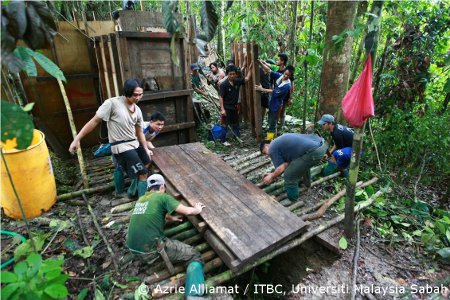
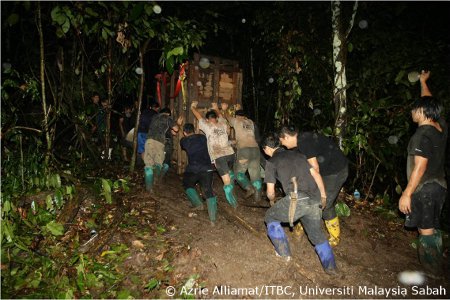
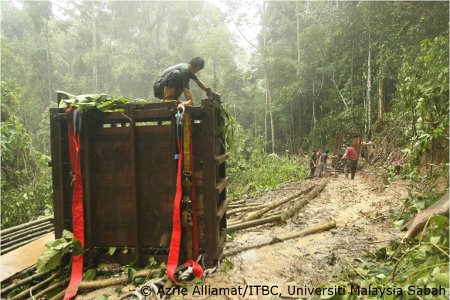
The organisation is still waiting for the government to build permanent facilities for them; in the meantime they have to make do with temporary enclosures. A male Sumatran rhino, Tam, has been there since 2008 after he wandered into a palm oil plantation, and they hope to introduce him to Puntung at a later stage. There is a good chance they will reproduce, as Puntung is aged 20-30 and seems fertile and healthy after lots of medical tests, and they already know Tam is of breeding age and can produce fertile sperm. Conservationists on the island of Sumatra are also doing their bit to help: they have a female rhino, Ratu, who has recently become pregnant again after miscarriage of her previous two babies. It is hoped that to combine these efforts with BORA’s programme to create a viable, self-sustaining population.
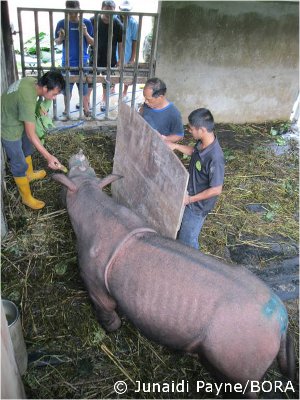
In conclusion, it seems that it’s probably too late to leave the rhinos where they are, doomed to wander the forests alone until they are poached or die. The BORA team hope to catch at least one more in 2012, but this depends on whether they get more space as they can only hold three rhinos at the current site. There are currently only about 40 rhinos left in Borneo, so BORA needs all the help it can get to act as quickly as possible and ensure their survival.
It’s clear that helping a species as endangered as the Sumatran rhino is hard work, but luckily there’s no shortage of people who are willing to pull out all the stops to save them.
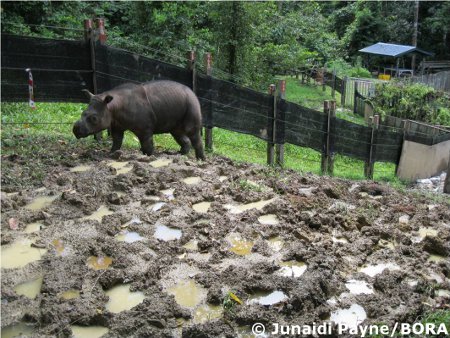
Related links: